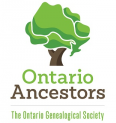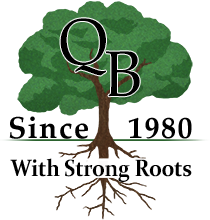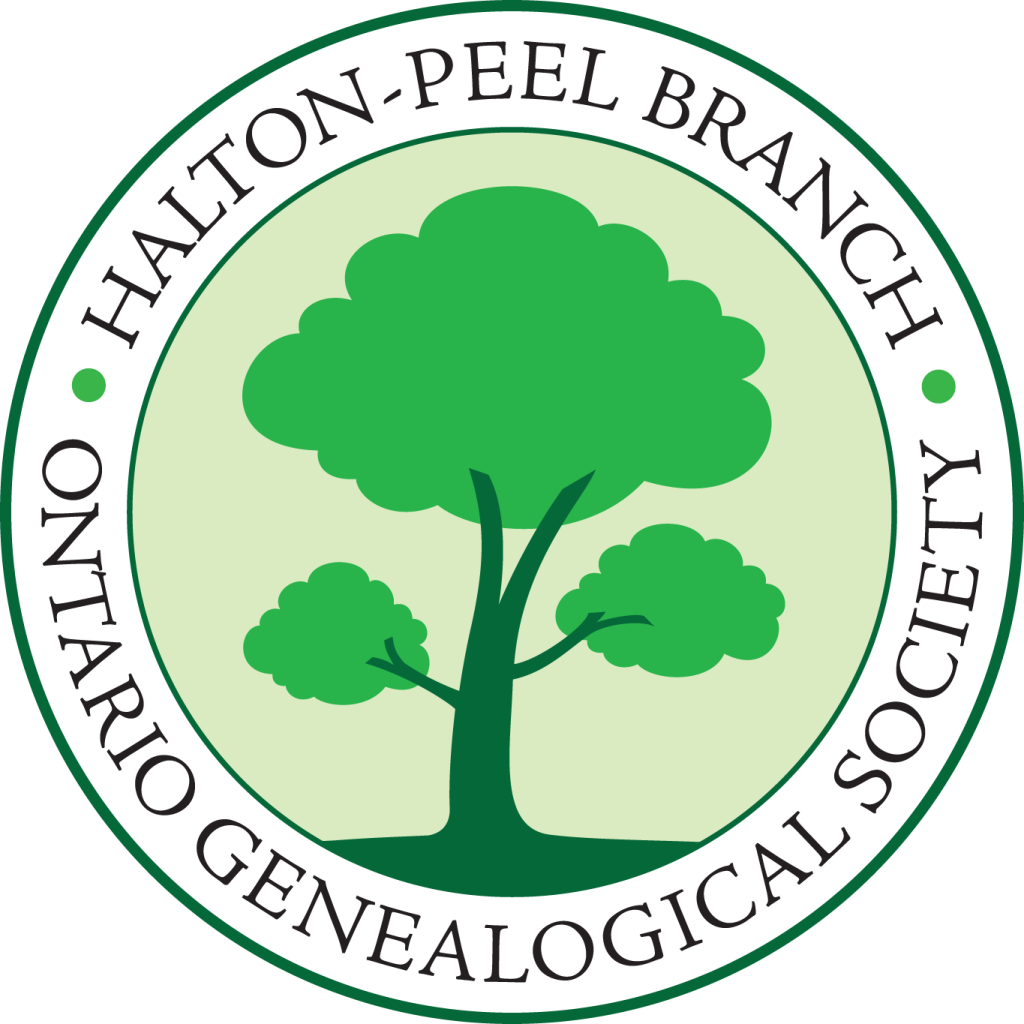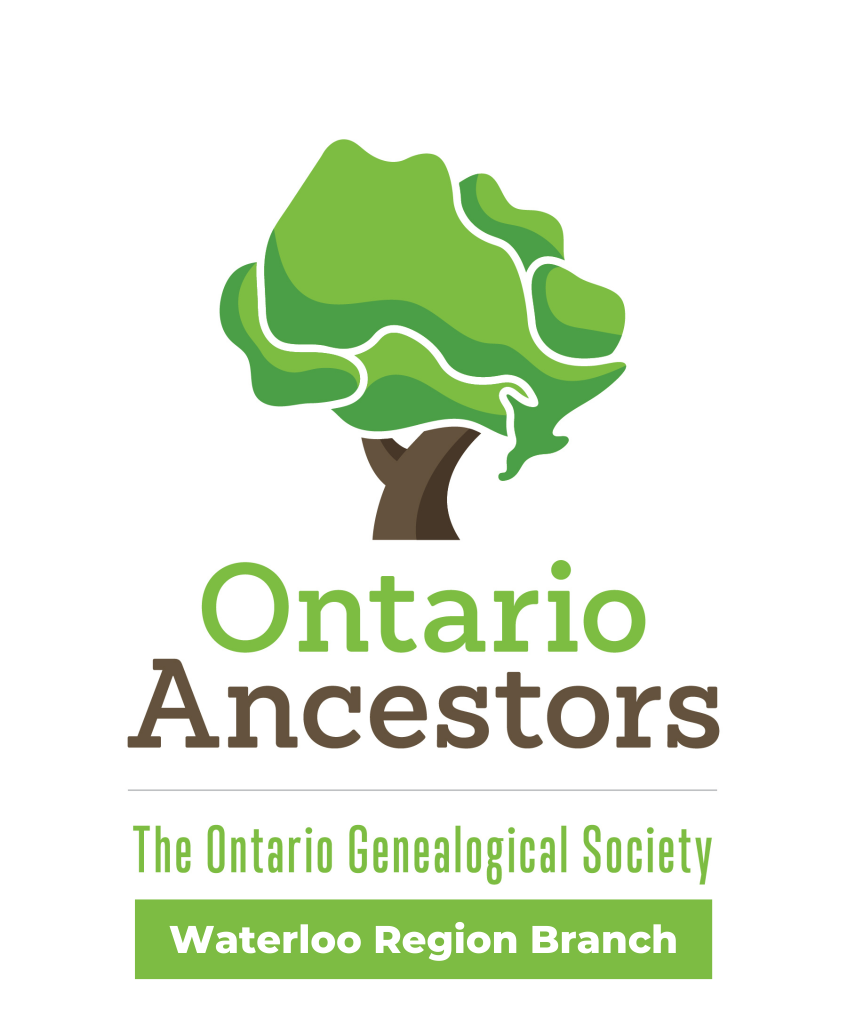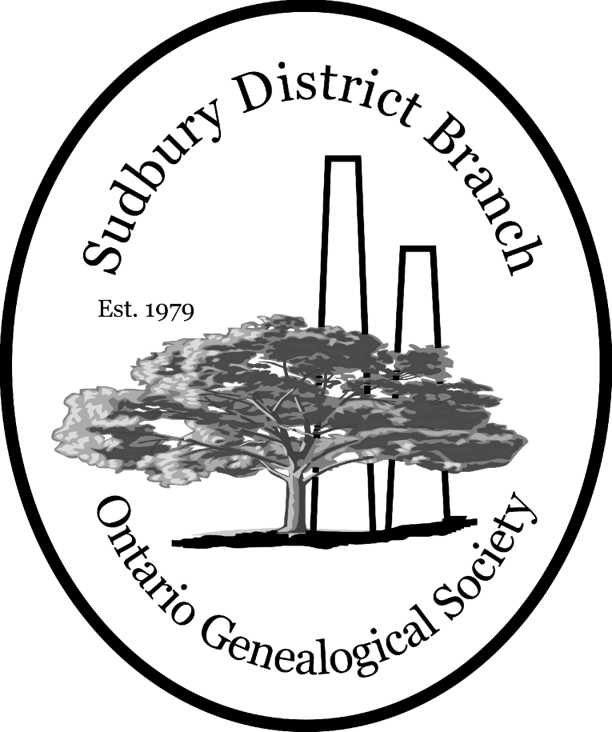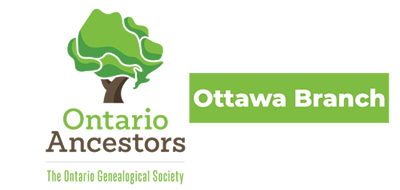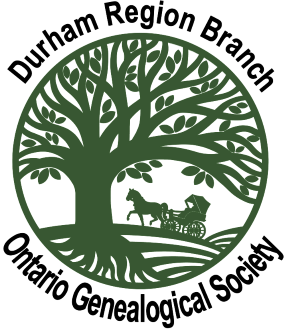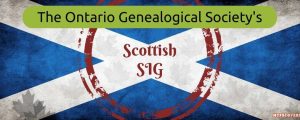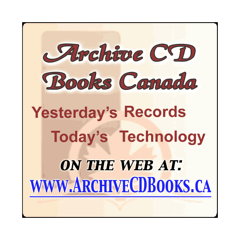The theme of this year’s conference is Diversity in Genealogy – Spotlight on the Grand River.
The event will be kicked off on Friday evening with a keynote presentation entitled “Indigenous Archaeology and History in the Grand River Valley” from Dr. Gary Warrick.
On Saturday and Sunday, two streams of content will be delivered, one focused on stories from the Grand River area and the other, exploring some of the hidden histories with an eye on diversity. There will be twenty-four sessions in total, with twenty-two different speakers, ensuring that this conference is chock full of compelling educational opportunities for everyone!
Session Details:
Presented by: Linda Corupe
Sponsored by:
Summary:
The taking of the oath of allegiance in our province has evolved over the years, and has left behind valuable documentation for genealogists.
Description:
Although our nation and province are composed of people from many different parts of the world, one main unifying factor is our allegiance. It was no different in early times, with the oath of allegiance being recognized as the gateway to such privileges as being able to vote, hold office, sit on a jury, or even, at times, hold land. Although its form has changed over the years, the importance of taking this oath was recognized by our diverse ancestors and the documentation left behind is a boon to genealogists.
Presented by: Jane E. MacNamara
Sponsored by:
Summary:
For the sake of economy or a favourable location, some settlers may have leased rather than owned land. Discover these early records in Township Papers.
Description:
A portion of each township in Ontario was reserved for the support of an Anglican clergy and schools. These lots were only available by lease—which meant many of early settlers did not own the land they lived on. Some got the opportunity to purchase the property later, but if not, the records of their occupancy can be hard to find. This session will look at records of clergy and school reserve leases as well as private rental agreements that have been preserved in the recently digitized Township Papers.
Presented by: Heather Rennalls
Sponsored by:
Summary:
There were Black settlements throughout Oxford County during the 1800s, that were rich in history with many residents who made contributions in Oxford County and in Canada.
Description:
Early Black Settlements in Oxford County – looking at the areas as well as discussing known sites and/or landmarks, significant incidents and/or events, individuals and families within these areas. Woodstock – industries, BME Church, Park Row Community Chapel, Smith Family. Ingersoll – Wesleyan Methodist Church, British Episcopal Church (BME), The Daly House, John Brown. Norwich Township – the Village of Norwich, Cincinnati riots of 1829, Lucan. South Norwich Settlements – schools, The Williams Family, Otterville, African Methodist Espiscopal Cemetery, Ray Lewis, population decline.
Presented by: Janice Nickerson
Sponsored by:
Summary:
While most early Japanese immigrants to Canada settled on the west coast, a few made Ontario their homes. This lecture tells their stories.
Description:
Did you know there were over 18,000 Japanese people living in Canada by 1907? Most of them settled on the west coast, but a few made Ontario their home. This lecture tells the stories of five Japanese immigrants and their families, and their lives in Ontario and beyond.
Presented by: Eva Kujawa
Summary: How our Eastern European ancestors came to Ontario and why.
Description:
In her presentation, Eva will cover an historical overview of Eastern Europe, and how it morphed through divisions and border changes, from wars and battles into the countries that we now have in today’s world. She will cover the majority of countries within Eastern Europe and will share the impacts of the various cultures that share the borders. Eva will then cover the various ways that people used to immigrate to Ontario and where they settled when they arrived, and what they did. She will address the potential challenges and hopefully supply some solutions for this type of genealogical research. Eva will take a look at languages, various handwriting styles, as well as various types of records that can be located. She will also supply a list of websites and databases that hold a huge amount of information for this region.
Presented by: Sara Chatfield
Summary:
Learn how to search for information about Indigenous ancestors and communities using familiar genealogical sources as well as other government records held at Library and Archives Canada.
Description:
This presentation will cover the types of documents and resources you can find on the LAC website for First Nations, Inuit and Métis Nation genealogy. Sara will cover: Review of Search tools and information about new LAC website; Indigenous people and the government of Canada – records that reflect a historical relationship and terminology considerations; Vital statistics; Census; Record Group 10 (RG10) – The Department of Indian Affairs – Overview of collection including: Estate files, Band lists, Enfranchisement files, and Residential School files; Record Group 15 (RG15) – Department of the Interior including: Métis Nation Scrip documents; Record Group 85 (RG85) – Northern Affairs Program; Access to Information and Privacy – accessing restricted records; Other Sources including: Newspapers, City Directories, Family Histories, Military records, and Published sources.
Presented by Gordon McBean
Summary:
The computer screen in the background of a police drama flashing through faces, then BOOM, “Match”. Genealogists now have this facial recognition power.
Description:
We have all seen it. The computer screen in the background of a police drama flashing through faces as the two detectives in the foreground argue that it might take days. Then BOOM, it stops on one face and a box pops up “Match”. The realm of super computers crunching this mass of data is gone. Genealogists now have on their desktops or their websites this facial recognition power. My Heritage has had the technology for about 10 years. They have also had online facial aging and celebrity matching service based on the technology. I use Adobe Photoshop Elements to organize and tag my photo collection. In this presentation we will look at ways to use the technology in your genealogy to organize and tag your photos.
We are not stopping during lunch! We welcome everyone to grab your lunch and join us to hear from a couple of our amazing sponsors and a handful of the incredible archives, museums and heritage organizations that submitted to our database of local listings!
Saturday:
MyHeritage
Findmypast
Bruce County Museum & Archives
Beachville Museum
Community Waterfront Heritage Centre
Kingsville Military Museum
Lakehead University Archives
HEIRS – Harrow Early Immigrant Research Study
City of Ottawa Archives
Sunday:
MyHeritage
Vivid-Pix
BIFHSGO – British Isles Family History Society of Greater Ottawa
Oxford Archives
Newcastle Village and District Historical Archives
Thessalon Township Heritage Organization
Gravenhurst Archives
Serbian Heritage Society
Toronto Branch – United Empire Loyalists of Canada
Registration closes Thursday Sept 7th at 11:59pm.
Presented by Jen Baldwin
Times listed below are EDT and are approximate. There will be an hour break for lunch from 12:00 – 1:00 PM.
9:00 AM – British Bonanza! Exploring England’s Records from Home. What do you need to know about British genealogy to get started? This presentation will talk you through the basics and highlight unique records found only on Findmypast.
10:00 AM – Strategic Searching on Findmypast. Make the most of your valuable time on Findmypast after learning best practices, different ways to search, and utilizing the site to your greatest advantage through this presentation. Our newest features will always be included.
11:00 AM – In-Depth with the 1921 Census of England and Wales. A crucial window into the population, the 1921 Census is a remarkable collection of individual stories and truths of our ancestors, just waiting to be found. This session will cover the vast research opportunities from around the world, made available for the first time only on Findmypast.
1:00 PM – Whistle Stop Tour: The British Newspaper Archive. The value of newspapers in family history is undisputable, and that includes newspapers from overseas. Learn the ins and outs of the largest online collection of digitized newspapers from the British Isles and the British Commonwealth.
2:00 PM – Q&A
This is a virtual live session only and as such, will NOT be recorded.
The Findmypast Workshop is purchased separate from Conference. Cost is $25. Register now!
You must be signed in and registered to access the workshop. If you are not registered, please setup your account first. If you have an account please login.
Login Here
Forgot Password?
Presented by Gary Warrick
Summary:
The Grand River valley has been home to Indigenous peoples for over 13,000 years. Oral history and archaeology are the only way to view most of this Indigenous past. In more recent times, documentary (including genealogical) records, paintings, maps, created mostly by non-Indigenous people, can help us to see the past more clearly, particularly the people. In the early 2000s, archaeological and historical research of Davisville was carried out, an early 19th century Mohawk-Mississauga community and the site of a Methodist mission in northwestern Brantford. Davisville’s archaeology and history provides us with a glimpse of the everyday lives of its Indigenous residents and relationships between them and the non-Indigenous settlers of early Upper Canada.
Friday Keynote Presentation
Presented by: Jane E. MacNamara
Presented by:
Summary:
A look at projects—successful and not—to use the Grand for settlement, navigation, industry, and agriculture, and records to help understand their effect on your ancestor.
Description:
From the time of earliest European settlement, the Ouse/Grand River was recognized for its potential for both settlers and the accommodation of Indigenous people. This session will look at an assortment of projects that were proposed for communities along the great length of the Grand—some of which were built and others that existed for a short period, as well as some that failed miserably. The emphasis will be on the kind of records that can be used for researching activity along any Ontario River—but focusing on the Grand.
Presented by: John Davis
Summary:
Haldimand Tract land sales were meant to benefit the Six Nations trust fund. The lecture will explain how this made the pre-patent records different.
Description:
Partly in 1784, and partly in 1792, a large tract north of Lake Erie was purchased, for granting to settlers, from the Mississaugas of the Credit. The portion along the Grand River (the Haldimand Tract) was reserved for those members of Six Nations who, having left New York, wished to re-settle here. A crown reserve (Guelph township) and clergy reserve (parts of Wellesley and Peel townships) were also set aside in respect of the Tract. In controversial transactions between 1795 and 1809, ultimately sanctioned by government, seven townships were sold, as townships, so as to create a trust fund for Six Nations. At the same time, Joseph Brant, as agent of the Six Nations, began (again controversially, and in defiance of government) to make out 999-year leases to settlers for smaller parcels. The resulting complications began to be regularized in the mid-1830s. Also, starting in 1830, farm and town lots again began to be sold by government, the proceeds, once again, to go into the Six Nations trust fund. As the province moved towards responsible government (except in relation to Indian Affairs from 1844 to 1860), a Special Commissioner was appointed to manage the sales. The sales continued following Confederation in 1867, but the manner of conducting the sales was in dispute until Ontario and Canada reached a settlement in 1924. The result of this history is that the search for Haldimand Tract land records, up to and including the crown grants, can puzzle people, even those who are familiar with land records research in other parts of the province. The objective of the lecture is to describe, and explain, the differences. As the history of the land registries in the area is somewhat complex, and because many transactions prior to the crown grants were also registered, the lecture will also include a brief review of the places where records following the crown grant can be found.
Presented by Kaye Prince-Hollenberg
Summary:
This session explores the history of the community including immigration and industry, and delves into the abundant resources available for researching Jewish genealogy in Ontario.
Description:
The Jewish community in Hamilton has existed for over 170 years and during that time it has reflected the larger Canadian Jewish experience. In this session we’ll look at the history of the community, how waves of immigration and industry convinced Jewish immigrants to choose Hamilton, the establishment of synagogues and community organizations, and explore the abundant resources available for researching Jewish life in Ontario.
Presented by: Kae Elgie
Summary:
Learning about the people who lived on the land before your ancestors arrived will change your perspective on your family’s history. Learn why and how.
Description:
Learning about the people who lived on the land before your ancestors arrived there will change your perspective on your family’s history. It surely did for me. With growing awareness and increasing sensitivity to other people’s narratives, it’s vital that all genealogical and family history research takes a holistic and inclusive approach. It’s time to forget the myth of European pioneers coming to empty lands and singlehandedly, as isolated trailblazers, turning wilderness into farmland.
The discovery of “prehistoric” artefacts on the 200-acre farm where I grew up prompted me to research the archaeological history of southwestern Ontario, and through consultation with archaeologists, use that research to imagine the many generations of post Ice Age people who, like my family, had relied on that land for our livelihood. Extensive self-study and learning about Indigenous worldviews, law, social organization helped me see pioneer history in another light. Especially, it caused me to re-evaluate certain land transactions made by my great-great-grandfather.
By drawing on the 12,000 year story outlined in This Land: the story of two hundred acres in Kent County, Ontario (Fountain Street Press, 2019, ISBN 978-0-9812776-3-9), I will show conference attendees how they can begin to understand the longer, truer story of the land where their ancestors settled. Attendees will leave with suggestions of research techniques, sources and strategies they can apply to their own genealogical work.
Presented by: Laureen Harder-Gissing
Summary:
The Mennonite Archives of Ontario reflects the histories and genealogies of diverse Mennonite communities, along with a growing understanding of Indigenous-Mennonite relationships on this land.
Description:
Present-day Waterloo Region contains one of the most diverse Mennonite populations in the entire world. The Mennonite Archives of Ontario at Conrad Grebel University College in Waterloo seeks to reflect that diversity through its historical and genealogical holdings. In my presentation, I will share stories of the migration of Mennonites from Pennsylvania (the first European-origin settlers on this land), the Amish from Europe, the Russlaender and post-Second World War immigrants from the Soviet Union, and the development of various Old Order, Conservative, new immigrant, and Low German communities. I will highlight the ways in which original documents from the archives, materials from our library, and digital resources on our website can be used to learn more. I will conclude by describing the Archives’ efforts to be involved in the work of truth and reconciliation.
Presented by: Art Taylor
Sponsored by:
Summary:
Museums, Historical Societies, and Heritage Railways offer a variety of artifacts, documents, and learning experiences for anyone researching Canadian railways.
Description:
List of some museums, heritage railways and railway historical societies, particularly in Ontario. Corporate archives from major railways, route maps, society newsletters and journals etc. Re-live the lives of your ancestors as they travelled by rail.
Presented by Alison Norman
Summary:
Alison will discuss how she has used genealogy to gain a better understanding of the community at Six Nations of the Grand River in the early twentieth century.
Description:
In this presentation, Alison will discuss how she has used genealogy to gain a better understanding of the community at Six Nations of the Grand River, and especially women, in the early twentieth century. She has been researching the community for 20 years, building relationships, and learning Haudenosaunee history. She will discuss how and why she built family trees and investigated relationships between families of the Six Nations, and also several British women who were connected to the community and worked as allies. This presentation comes from an outsider perspective, and will also discuss the limits to doing research about a community that is not your own.
Presented by Christina Han
Summary
In this lecture, Christina will introduce the interactive spatial database of early immigrant communities in Brantford which I designed, a project funded by Social Science and Humanities Research Council of Canada. The database, built on data gathered from census records and newspapers, is a useful tool for studying the genealogy of early Armenian and Italian industrial workers in Brantford, Ontario.
Description
This lecture will cover an introduction to the Brantford Deep Mapping Project, various data and resources, the Armenian and Italian communities in Brantford and will make some conclusions about industry as it relates to genealogy.
Presented by: Jennifer DeBruin
Summary:
Women are often shadows in family trees, yet their unique perspectives and experiences helped to shape the future of their families and communities.
Description:
In this presentation we’ll explore the stories of women who experienced extraordinary history, including women who settled along the Grand River during the influx of United Empire Loyalists. Through these stories. I’ll demonstrate how to use a variety of research sources and methods that can bring women in your family tree from the shadows.
Presented by: Sher Leetooze
Sponsored by:
Summary:
Where did my Bible Christian ancestors come from? Where did they settle? How did they come to be scattered all across Ontario and North America? Through research and use of maps, Sher Leetooze will try to answer these questions.
Description:
People came from Great Britain in the first half of the 1800s for many reasons, but the most compelling reason was economic. How else could a family have a 100 acre or 200 acre farm for £5? If you divide the people into categories by occupation, the largest group to come to Ontario were farmers, and farm labourers. If you divide that group into religious categories, by far the largest was Bible Christian, followed very closely by Wesleyan Methodists – for instance on one page of the 1852 census, there were listed 10 Bible Christian families, 2 Wesleyan families, 1 Episcopal Methodist family and 1 Roman Catholic family.
Depending on the community’s location within the province, this was usually the norm. Location in the province had a lot to do with the religious affiliation of any one family or person. One of the first areas to settle Bible Christian families was Cobourg in the early 1830s where the BC Missionary, John Hicks Eynon settled. And so, more BCs followed Eynon to Upper Canada, and settled in the vicinity of his circuit. Eynon’s circuit was some 200 miles in circumference and covered from Scarboro to Cobourg taking in all the townships in between. That first circuit formed the central settlement area for BCs.
It was the custom for BC ministers to be transferred between circuits every three years. Sometimes they were sent to a nearby circuit, but often the new circuit was hundreds of miles away. When Cobourg area ministers were transferred down to the Huron County area from Eynon’s original area, many families uprooted and followed them – often leaving grown children on the original farm, thus splitting families.
After familiarizing people with the Bible Christian immigration pattern, I will show maps of various areas and show the circuits. I will tell about the movement of ministers between the various areas, and show how families came to be in those areas. Just when you think you have found a great way to track family movements, I will show people how and why the various areas of families moved to the American mid-west and to our own Canadian western provinces – mostly Manitoba. Now we have many families split again. So, if you wonder how your family is related to same name families in the American Mid-West, in Manitoba, Huron/Perth County or Cobourg/Bowmanville families – they likely are, and research using Religious groups and their movements may help you find lost cousins.
Presented by: Christine Woodcock
Summary:
In this presentation we will look at the players in the Canada Company, John Galt and the settlement of the lands known as the Huron Tract.
Description:
Scottish novelist, John Galt had a vision. He envisioned himself as a colonizer and reasoned that a private venture with enough capital could buy large amounts of the land that the Crown had acquired from Canada’s indigenous people and sell it profitably to the flood of European settlers. Within short order, Galt had purchased 2.4 million acres in what was to become The Huron Tract. This land was part of Treaty 29. The Huron Tract Treaty was signed by eighteen Anishinaabek chiefs in1827 in Amherstburg.
Presented by: Lorie Pierce
Sponsored by:
Summary:
The archival columnist from the oldest continuously-published newspaper in North America will explain why and how to access the newspaper’s online editions.
Description:
Originally published as the Quebec Gazette in 1764, different iterations of this English-language newspaper contain potential nuggets of family history information that can be overlooked. This presentation provides a road map to access the free online records existing on BANQ (Bibliothèque et Archives nationales du Québec) and Google News Archive. This presentation will cover: 1. The central role of Quebec City as an immigration entry point, cultural, religious, and military centre; 2. Examples of where Quebec City may fit into your family history story, even if your family never lived in Quebec; 3. Types of genealogy information buried in the archives; 4. How to access the newspaper online under its various names and publication dates, including how to navigate French onscreen menus; and, 5. Other English-language resources in Quebec City, including historical societies and cemeteries.
Presented by: Bill Thompson
Sponsored by:
Summary:
The Nelles Family were United Empire Loyalist settlers who had a strong and enduring relationship with their Indigenous neighbours at the Grand River.
Description:
The Nelles Family were United Empire Loyalist (UEL) settlers from the Mohawk Valley in New York who because of their long-standing relationships with the Indigenous people and their British military service received large tracts of land on the Grand River from the indigenous people and from the British in what is now Grimsby, known then as The Forty. They fought alongside the Indigenous warriors in the American Revolution and the War of 1812. They lived and maintained strong ties with the local people at the Grand River and many descendants still live in this area. When family established a home at the Forty it became a respite for travelling warriors and a place of welcome for their Indigenous friends. We will discuss their early arrival and their enduring relationship with their Indigenous neighbours through trade, personal relationships and common interests. The discussion will include historical maps and letters that reflect the interrelationship between the Indigenous people and the Nelles Family as new arrivals. A battle in the War of 1812 was fought on the Nelles family property at the Forty and the Indigenous warriors from the Grand River were a major factor its successful outcome. We will briefly outline the effects of this battle. Joseph Brant and the Nelles family were close friends and this friendship endured for several generations as shown through letters and documents.
Presented by: Beth Adams
Summary:
While helping cousins uncover their Wedge Family history through DNA results, “stories” of connection to the Six Nations Reserve in Brantford were made and researched.
Description:
While recently helping cousins discover their family history through DNA results many surprises were uncovered. These included “stories” of connections to the Six Nations Reserve in Brantford and possible United Empire Loyalist heritage. This presentation will review the processes and research that were used to prove or disprove these connections in an ethical and sensitive manner. Successful and unsuccessful sources will be discussed. As with most of our family histories, this one is a “work in progress”.
Presented by Bill Darfler
Summary:
The development of settler communities along the Grand River since the Haldimand Proclamation of 1784.
Description:
As we’re 11 years from the declaration of the Haldimand Proclamation of 1784 turning 250 years old, I’m proposing the writing of a survey of the Haldimand Tract covering the history of the Six Nations in its exile from New York State, the development of the settler communities on the Grand, the immigrant histories in those communities, the history of the Grand River Conservation Authority (GCRA) and the nomination of the Grand as a Heritage River, etc. The Haldimand Proclamation of 1784 facilitated the first settlement of the Grand River since the expulsion of the Neutrals in the 1650’s.
Sponsored by:
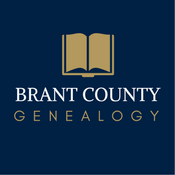
Presented by Jon Marie Pearson
Summary:
Social media platforms have become an integral part of our daily lives, but they can also be a powerful tool for genealogy hobbyists, genealogists, family historians, and genealogical and historical societies.
Description:
This presentation will include a definition of social media and genealogy community and the importance of social media for hobbyist and professional genealogists and historians. There are many benefits including connecting with others in the field, accessing valuable resources and, preserving family history. By building connections on social media, we can identify and join relevant groups and communities, engage with others through comments and direct messages, create content to share and, collaborate with others on research projects. This talk will use case studies and real-life examples to give the listener some practical tips and strategies.
Presented by: Linda Corupe
Sponsored by:
Summary:
The documents generated by early elections and party affiliation in our province can be helpful to genealogists.
Description:
There is a wealth of documents that were generated by political activities in early Ontario. Our ancestors could have left behind mentions in poll or voting lists, as an objector to electoral results, as a participant or witness to violence and/or crime occasioned by party affiliation, or simply as a member of a political party or movement. This presentation will outline the various documents that can be accessed, where to find them, and what to expect from them.
